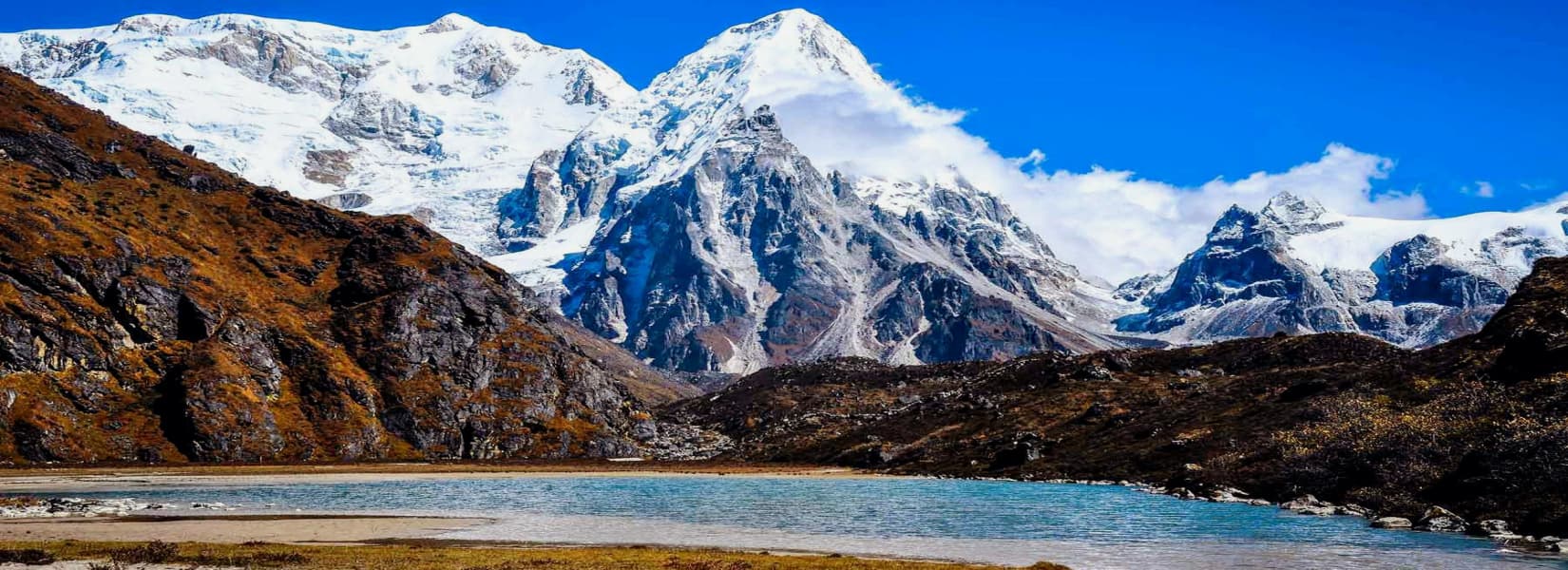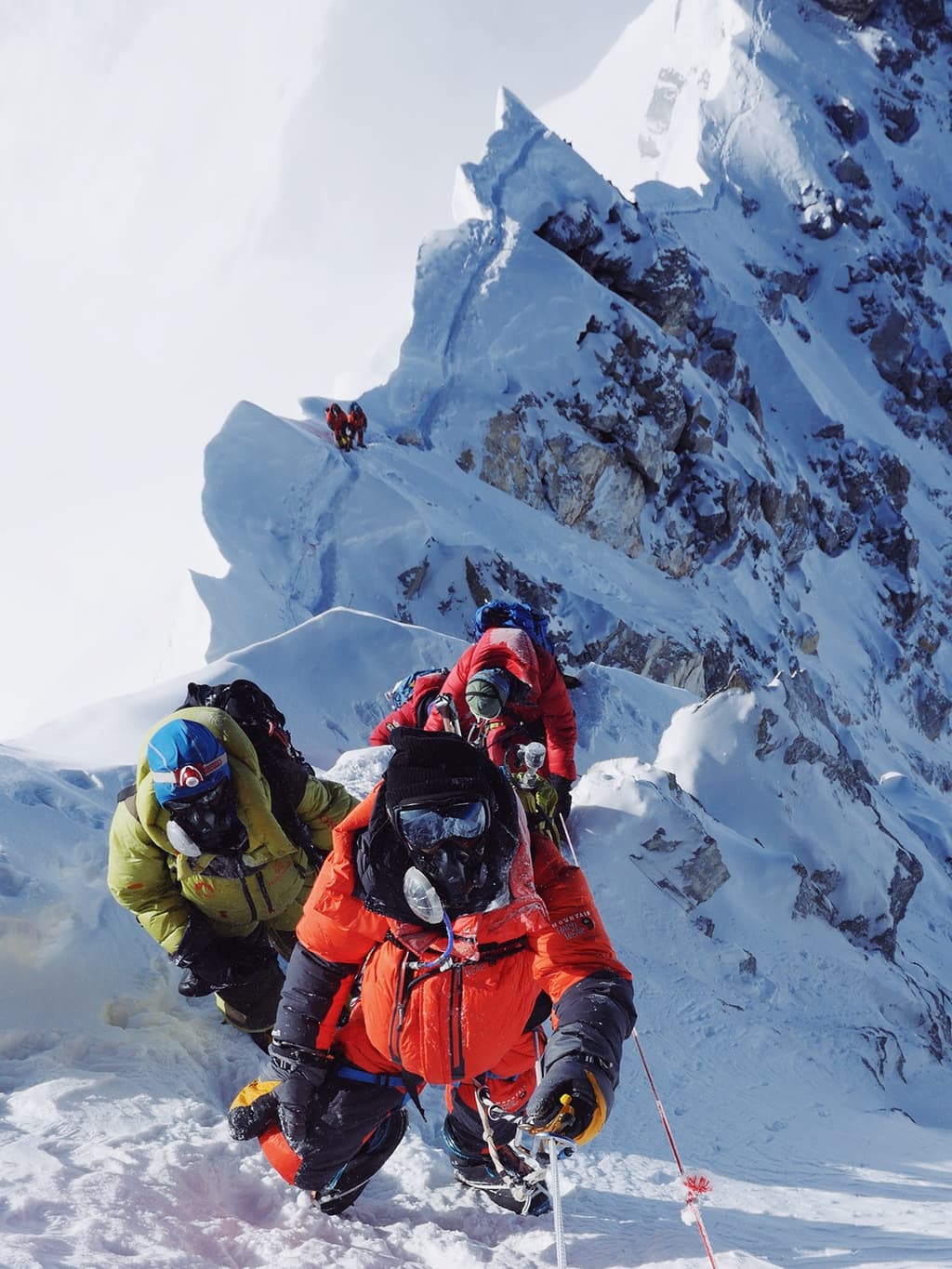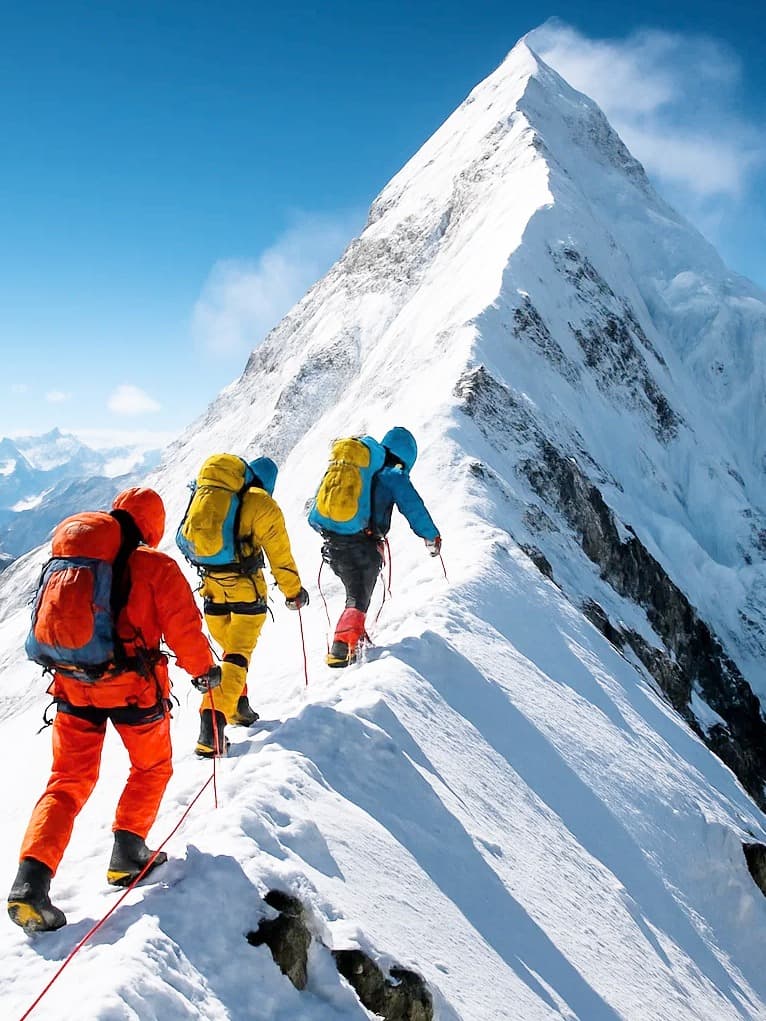Ever felt overwhelmed looking at photos of Everest Base Camp overrun with trekkers? Like you're joining a mountain highway instead of escaping into the wilderness?
There's a Nepal that exists beyond the postcard peaks – untamed, quiet, and mysteriously absent from most travelers' itineraries. The less explored peaks of Nepal offer everything the famous mountains do, minus the crowds and commercialization.
These hidden treasures deliver authentic cultural exchanges with remote villages, pristine trails where footprints are rare, and views so personal they feel like they're yours alone to discover.
But here's what most trekkers never realize – reaching these secret summits doesn't require superhuman fitness or emptying your savings account. The question is: are you ready to step off the beaten path when everyone else follows the crowd?
Beyond Everest: Nepal's Hidden Mountaineering Gems
Why experienced climbers seek less-crowded peaks
Look, Everest gets all the glory. But real mountaineers know there's magic beyond that famous silhouette. We've seen it firsthand - veteran climbers increasingly turning away from the "Everest highway" toward Nepal's quieter summits.
Why? The crowds on Everest have gotten ridiculous. Picture this: standing in a literal queue at 8,000 meters, oxygen dwindling, while waiting for your "summit selfie." Not exactly the wilderness experience most climbers dream about.
These seasoned mountaineers crave authentic challenges. They want technical routes that test their skills, not just their ability to follow a fixed line. They're after that pure alpine experience - making decisions, reading the mountain, relying on their expertise rather than commercial infrastructure.
Benefits of exploring lesser-known mountains
The perks of going off the beaten path are massive. First, there's solitude. Imagine standing on a summit knowing you might be the only person to reach it that year. That's a feeling you simply can't buy on Everest.
Then there's the cultural immersion. These remote expeditions take you through villages rarely visited by outsiders. The locals aren't jaded by tourism - they're genuinely curious about you, and the connections formed are authentic.
Cost is another huge factor. While Everest commands $45,000+ for a standard expedition, many incredible 6,000-7,000m peaks can be climbed for a fraction of that. Your money goes further, and often more directly benefits local communities.
How Everest Sherpa Expeditions specializes in unique climbing experiences
We're not your typical climbing outfit. While others chase the big-name peaks, we've spent decades building expertise on Nepal's hidden gems. Our Sherpa guides grew up in these valleys and know the lesser-traveled routes like the backs of their hands.
We pride ourselves on customization. Want a technical challenge? We'll take you to Kyashar's imposing north face. Seeking something less technical but equally rewarding? Mera Peak offers stunning Everest views without the Everest crowds.
Our approach isn't just about summiting. We design journeys that blend mountaineering with cultural immersion. You'll trek through remote Buddhist villages, participate in local ceremonies, and experience Nepal beyond the postcard views.
Overview of permit costs and accessibility compared to major peaks
The numbers tell the story:
|
Peak |
Permit Cost |
Typical Expedition Cost |
Climbers Per Season |
|
Everest |
$11,000 |
$45,000-$65,000 |
800+ |
|
Annapurna |
$1,800 |
$20,000-$30,000 |
150-200 |
|
Dhaulagiri |
$1,800 |
$15,000-$25,000 |
50-100 |
|
Himlung |
$600 |
$7,000-$12,000 |
30-50 |
|
Tukuche |
$600 |
$6,000-$10,000 |
<20 |
Beyond cost, accessibility varies dramatically. The commercial giants have established routes, fixed ropes, and helicopter access to base camps. Our specialty peaks often require longer approaches through pristine wilderness, offering adventures that start the moment you leave Kathmandu.
Top Less-Explored Peaks Worth Your Attention
Mera Peak (6,476m): The highest trekking peak with stunning Everest views
We've guided countless climbers up Mera Peak, and it never fails to amaze. At 6,476m, it's Nepal's highest trekking peak, offering something truly special - panoramic views of five 8,000m giants: Everest, Lhotse, Cho Oyu, Makalu, and Kanchenjunga. The climb itself is non-technical, making it perfect for ambitious beginners ready to push beyond standard treks.
The journey takes you through the remote Hinku Valley with its traditional Sherpa villages and pristine forests - a stark contrast to the crowded Everest Base Camp route. Most climbers need about 18 days to acclimatize properly, but your reward is standing on a summit that few tourists ever reach.
Ama Dablam (6,812m): Technical climbing with unmatched beauty
That pyramid-shaped peak you see in every Everest region photo? That's Ama Dablam, often called the "Matterhorn of the Himalayas." We love this mountain for its technical challenges and jaw-dropping beauty.
Unlike Mera, Ama Dablam demands solid climbing skills - you'll navigate exposed ridges, vertical ice, and technical rock sections. But the experience of climbing this iconic peak is worth every drop of sweat. From Camp 2, the views of Everest and Lhotse will stop you in your tracks, especially at sunrise when the mountains glow orange and pink.
Baruntse (7,129m): Challenging yet accessible 7000er
Breaking into the 7,000m club doesn't get more accessible than Baruntse. Tucked between Makalu and Lhotse in the Khumbu region, this peak offers serious altitude without extreme technical difficulties.
We typically approach via the Mera Peak route, crossing the challenging Amphu Labtsa pass (5,780m) - an adventure in itself. The standard Southeast Ridge route involves some steep ice climbing and exposed traverses, but nothing beyond what an intermediate climber can handle with proper guidance.
What makes Baruntse special is its isolation - you'll see Himalayan giants from angles that few ever witness. The summit push rewards you with views extending from Makalu to Everest's massive South Face.
Tukuche Peak (6,920m): Hidden gem in the Annapurna region
While crowds flock to Annapurna Base Camp, we've been guiding clients to Tukuche Peak - the region's best-kept secret. Standing proudly opposite Dhaulagiri, this mountain offers breathtaking views of both the Annapurna and Dhaulagiri ranges.
The approach through the Kali Gandaki gorge (world's deepest) takes you past ancient trading routes and traditional Thakali villages with incredible food and hospitality. The climb itself combines moderate snow slopes with some technical sections on the summit ridge.
What we love most about Tukuche is the variety - from subtropical forests to alpine meadows to high- altitude glaciers, all in a single expedition.
Singu Chuli (6,501m): Adventure in the Annapurna Sanctuary
Formerly known as Fluted Peak, Singu Chuli sits in the heart of the Annapurna Sanctuary, surrounded by giants. This technical gem requires solid ice and rock climbing skills, making it a challenging but incredibly rewarding objective.
We approach through the stunning Modi Khola valley, with its terraced fields and rhododendron forests. Once in the Sanctuary, you're surrounded by a 360° panorama of peaks over 7,000m - an amphitheater of mountains unlike anywhere else on earth.
The climb itself involves navigating crevassed glaciers and steep ice slopes. The final ridge to the summit is exposed and technical - not for the faint-hearted, but the views from the top are absolutely worth it.
Seasonal Guide to Climbing Nepal's Hidden Peaks
Pre-monsoon season (March-May): Optimal conditions and considerations
The pre-monsoon window offers what we consider the perfect opportunity to tackle Nepal's lesser-known peaks. From March through May, we enjoy stable weather patterns that make climbing more predictable. Temperatures hover at comfortable levels – not too hot at lower elevations and not brutally cold up high.
During these months, we see rhododendron forests burst into magnificent blooms, creating spectacular approaches through vibrant landscapes. The trails to remote base camps become accessible as winter snow melts away, though some passes above 4,000m might still have snow coverage.
What makes this season truly special? Visibility. Those jaw-dropping mountain panoramas that Nepal is famous for are at their clearest before the monsoon haze rolls in. We recommend this season especially for peaks like Mardi Himal and Pisang Peak, where the pre-monsoon conditions create ideal climbing scenarios.
Some considerations:
- Expect more crowded trails in April and May
- Prices for services trend higher during peak season
- Afternoon clouds can develop rapidly, so early starts are crucial
- Permits for most hidden gems are easier to secure than for mainstream peaks
Post-monsoon period (September-November): Clear skies and stable weather
Ask any experienced Himalayan climber when they prefer to climb, and many will point to the post- monsoon season. After the summer rains wash away the dust and haze, we're rewarded with the crispest visibility of the year. Those crystal-clear mountain views simply can't be beaten.
September usually starts with some lingering monsoon effects, but by late month, conditions improve dramatically. October and November deliver what we consider the most reliable weather windows of the year – stable temperatures, minimal precipitation, and moderate winds at higher elevations.
The post-monsoon period works wonderfully for peaks like Tharpu Chuli and Kyajo Ri. What makes this time special is the combination of reasonable temperatures and remarkably stable weather patterns. The monsoon has typically consolidated the snowpack, reducing avalanche risks on many routes.
Key benefits we've observed:
- Less precipitation means fewer weather delays
- Cooler temperatures without extreme cold
- Exceptional photographic conditions
- Fewer leeches on approach treks compared to pre-monsoon
- Cultural festivals like Dashain and Tihar add cultural richness to your expedition
Winter climbing opportunities for the adventurous
Winter expeditions aren't for everyone – we'll be upfront about that. But for those seeking solitude and extraordinary challenges, Nepal's hidden peaks offer remarkable winter climbing opportunities. From December through February, we enter a different world in the Himalayas.
The major advantages? You'll have the mountains practically to yourself. Permit fees often drop, and we can negotiate better rates with local services. The snow conditions can be excellent on many peaks – firm and stable rather than the wet, unstable snow sometimes encountered in warmer seasons.
However, we need to prepare for the challenges: temperatures can plummet below -30°C at higher elevations, and daylight hours are significantly reduced. Wind chill becomes a serious consideration, especially on exposed ridges.
Some lower-altitude peaks like Yala Peak and Lobuche East can be surprisingly manageable in winter with proper preparation. The northern sides of most mountains receive excellent sunshine during clear winter days, which can make climbing more pleasant than you might expect.
For the truly adventurous, winter ascents offer bragging rights few others can claim – tackling these hidden gems when most climbers have retreated to warmer latitudes.
Essential Preparation for Lesser-Known Expeditions
Physical Training Requirements for Technical Peaks
Climbing lesser-known peaks in Nepal isn't just about showing up with a backpack and good intentions. These technical climbs demand serious physical preparation. We've seen too many eager climbers struggle because they underestimated the physical demands.
For starters, we recommend a 3-6 month training program focusing on:
- Cardiovascular endurance: 3-4 weekly sessions of running, cycling, or swimming
- Strength training: Emphasis on legs and core work twice weekly
- Loaded hiking: Weekend treks with a 15-20kg pack to simulate expedition conditions
- Technical training: Rock climbing sessions to build finger strength and technique
The remote peaks of Nepal will test every muscle in your body. Those final summit pushes often require 12+ hour days at altitude with significant weight on your back.
Specialized Gear and Equipment Recommendations
Unlike the commercial routes on Everest, these lesser-traveled peaks won't have shops at base camp or rental options nearby. We bring everything we need or we simply go without.
Critical gear includes:
- Technical climbing equipment: Ice axes (traditional and technical), crampons compatible with your boots, harness, carabiners, and rope systems
- Protection gear: Ice screws, rock protection, snow pickets
- Cold weather layers: Proper down suit, multiple insulation layers, premium shell jacket and pants
- High-altitude essentials: Quality oxygen systems for peaks above 7000m, proper masks and regulators
Don't skimp on the big three: boots, sleeping bag, and down jacket. These items can make or break your expedition when you're days from civilization.
Acclimatization Strategies for Success
The key difference between climbers who summit and those who don't? Smart acclimatization. We've refined our approach over decades of climbing these hidden gems.
Our proven strategy includes:
- Initial acclimatization treks to 3500-4500m before attempting higher base camps
- "Climb high, sleep low" rotation schedules
- Hydration targets of 4-5 liters daily
- Rest days between major pushes
- Careful monitoring of oxygen saturation
The traditional wisdom of ascending no more than 300-500m per day between sleeping altitudes still applies, but we've found that adding extra acclimatization days at key elevations dramatically improves summit success rates.
Mental Preparation for Remote Climbing
The psychological challenges of lesser-known peaks often exceed the physical ones. We're talking about expeditions where you might not see another climbing team for weeks.
Mental toughness comes from:
- Setting realistic expectations about comfort, timeline, and success odds
- Practicing mindfulness and stress-management techniques
- Building decision-making frameworks for high-risk situations
- Accepting the inherent uncertainty of remote climbing
The isolation can be profound. Days of waiting out storms in a tent, limited communication with home, and the constant pressure of self-reliance create a mental environment unlike anything in everyday life. We prepare our climbers with visualization exercises and scenario training to build the mental toolkit needed when things get tough.
The Everest Sherpa Expeditions Advantage
Our experienced Sherpa guides with local knowledge
When it comes to tackling Nepal's hidden mountaineering gems, having the right guide makes all the difference. Our Sherpa guides aren't just experienced mountaineers—they're locals who grew up in the shadow of these majestic peaks. They know every crevasse, every weather pattern, and every local custom that might affect your journey.
Unlike commercial expeditions with foreign guides, our team brings generations of mountain wisdom passed down through families. Many of our guides have summited Everest multiple times, but they're equally passionate about introducing climbers to the peaks where their ancestors first learned to navigate the high Himalayas.
Customized itineraries for peak combinations
No two climbers are the same, which is why we don't offer one-size-fits-all expeditions. We craft unique itineraries that combine multiple lesser-known peaks based on your experience level, time constraints, and personal goals.
Want to summit Mera Peak and then head to Baruntse? Or perhaps tackle the Rolwaling Trekking Peak circuit? We design logical progressions that maximize your acclimatization and success chances while minimizing logistical headaches.
Sustainable and responsible climbing practices
The pristine nature of these less-visited peaks is precisely what makes them special. We're committed to keeping them that way. Our expeditions follow strict leave-no-trace principles, with comprehensive waste management systems that go beyond standard practices.
We limit our group sizes to reduce environmental impact and train all clients in glacier and alpine ecosystem preservation techniques. By working closely with local communities, we ensure that tourism benefits those who call these mountains home.
Success stories from our previous expeditions to lesser-known peaks
The proof is in our track record. Just last season, our team guided a group of intermediate climbers to successful summits of both Kyung Ri and Nirekha within a single expedition—a combination rarely attempted by other operators.
Another highlight came when we helped a photographer who had previously attempted Chulu West twice with other companies. With our route planning and local knowledge, she finally reached the summit and captured award-winning images of the Annapurna range from this unique vantage point.
Safety protocols for remote mountain regions
Remote peaks demand extra safety considerations. We implement comprehensive protocols including satellite communication systems at all camps, detailed evacuation plans specific to each region, and medical training that addresses altitude-related complications in locations far from standard rescue infrastructure.
Our equipment goes through triple-checking procedures, and we maintain lower client-to-guide ratios than industry standards. We've developed relationships with local helicopter services that understand the particular challenges of these less-frequented areas, ensuring that help is available even when you're off the beaten path.
Discovering Nepal's less-explored peaks offers adventurers a fresh perspective on Himalayan mountaineering beyond the famous Everest route. From the challenging slopes of Mera Peak to the sacred heights of Ama Dablam, these hidden gems provide breathtaking landscapes and authentic cultural experiences without the crowds that characterize more popular destinations. The right seasonal planning and proper preparation can transform these expeditions into truly unforgettable journeys.
When you're ready to venture beyond the ordinary, Everest Sherpa Expeditions stands ready to guide your journey with our unmatched local expertise and personalized approach. Our experienced Sherpa guides bring generations of mountain knowledge to ensure your safety while helping you forge a deeper connection with Nepal's magnificent but lesser-known peaks. Take the path less traveled—your ultimate Himalayan adventure awaits on these majestic mountains that few get to experience.
If you need any further information, please contact us by email: [email protected], Phone: +977- 980 195 6248 (WhatsApp).


